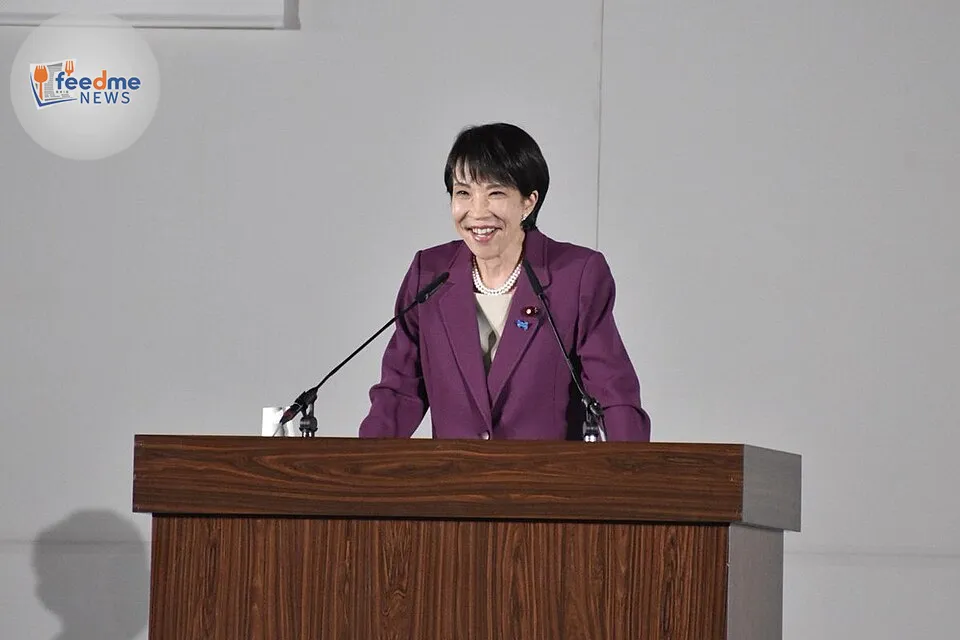Sanae Takaichi has moved a step closer to becoming Japan’s first female prime minister after officials confirmed media reports that the Liberal Democratic Party (LDP) would join forces with the rightwing Nippon Ishin (Japan Innovation party). The reported agreement links two parties that align on tougher security policy, a hard line on China and opposition to mass migration. If the plan holds and the parties secure a working majority in the lower house, Takaichi would be well placed to win the Diet vote for prime minister. Japan has never had a woman in its top political job, and Takaichi’s rise would mark a rare breakthrough in a system long dominated by men.
Officials acknowledged the reports on Monday but did not release full details of the agreement. Questions remain over the exact terms of cooperation and how the new arrangement would sit alongside the LDP’s long-standing partnership with Komeito. Even so, the move signals a potential shift in Japan’s ruling bloc and a stronger push on security and immigration policy.
Context and timing
The confirmation came on Monday, according to officials, after Japanese media reported talks between the LDP and Nippon Ishin. The development adds momentum to Takaichi’s bid to secure the premiership, with coalition negotiations often decisive in determining the outcome of a Diet vote.

This file is licensed under the Creative Commons Attribution 4.0 International license.
How a coalition could clear the path to power
Japan’s prime minister is elected by the National Diet. The lower house holds the decisive vote. If a party or coalition controls a majority there, it can secure the premiership for its chosen candidate. A partnership between the LDP and Nippon Ishin would bring together two right-leaning forces and could consolidate support behind Takaichi in a parliamentary ballot.
The LDP has dominated postwar politics and has often governed in coalition. Since 1999 it has typically relied on Komeito to secure stable majorities. It was not immediately clear whether the reported deal with Nippon Ishin would replace, supplement or otherwise alter this long-running arrangement. What is clear is that any pact that strengthens the LDP’s numbers in the lower house would make it easier to secure the votes needed to elect Takaichi as prime minister.
Who is Sanae Takaichi?
Takaichi is a veteran LDP conservative known for her hawkish views on security and her calls for constitutional revision. She has served in senior cabinet roles, including as Minister for Internal Affairs and Communications under former prime minister Shinzo Abe. She ran for the LDP leadership in 2021, raising her profile across the party and the country.
Her political record places her on the party’s right flank. She has backed stronger defence capabilities, tighter controls on immigration and a firm stance on China. Her conservative views, along with her ties to influential party figures, have made her a prominent voice in debates over national security and historical memory. If she becomes prime minister, she would break a barrier that has stood since the founding of modern Japanese democracy.
A landmark moment for women in Japanese politics
Japan has never had a female prime minister. Women hold fewer than one in ten seats in the lower house, one of the lowest rates among advanced democracies. Gender equality advocates have long argued that the lack of female leadership narrows the country’s policy debate and weakens representation.
Takaichi’s ascent would not, by itself, close the gender gap in politics. But her rise would carry symbolic weight and could open space for more women to seek leadership roles. It would also test how voters and party powerbrokers respond to a woman leading the government in a system that still skews heavily male at every level.
Nippon Ishin’s platform and points of alignment
Nippon Ishin, often shortened to Ishin, grew out of Osaka-based reform movements and has cast itself as a right-leaning, pro-market





